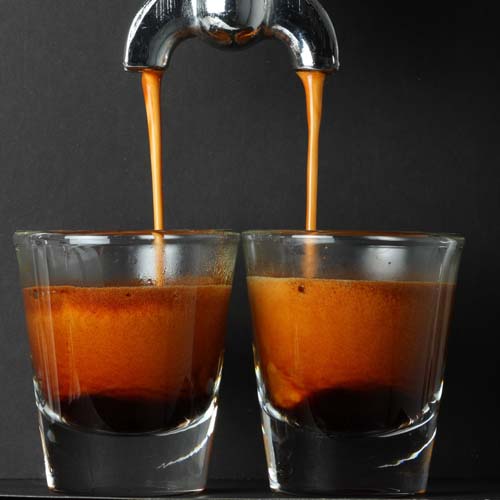Defining Espresso

There has been some discussions about the espresso brew formula and the associated espresso volume, as well as what constitutes a double espresso. We decide to share what are the different types of definition of espresso and make it easier to understand.
1. Style of Roasting
Older roasting (European) style is dark and produces a lot of crema and very fast espresso.
Current newer style ("3rd" wave) produces lower crema and slower espresso.
And there is a mix of new and old styles across the whole world. Hence SCA prefers to stick to old definition of 30 +/- 5 ml of volume to define the espresso.
2. Volume as a Guide and not as a "Veto"
Volume is taken as it is, and this is the reason it is de-emphasized and the measuring glass is even omitted from lesson. But the lower ear of the espresso (demitase) cup gives an indication of roughly 1 oz (30 ml) which is taken as a rough gauge whether volume is enough. Of course volume cant be grossly over or under.
3. Espresso Brew Formula (EBF)
This refers to mass (weight) and not volume.
To make espresso, EBF (= yield/dose, i.e. output/input) is 1.5 to 2.5. This means for a 20 gm dose, and applying a EBF of 2, the yield or output should be 40 gm.
So this 40 gm fulfills the definition of espresso, but it is in fact 2 espresso.
4. World Barista Championship Definition of Espresso
|
3.Beverage Definitions 3.1. Espresso A. Espresso is a one (1) fl. oz. beverage (30mL +/-5mL) made from ground coffee, poured from one (1) side of a double portafilter in one (1) continuous extraction. |
Given this, the 40 gm produced in S/N 3 above equals 2 espresso. This means each espresso, assumed to be proper and even extraction without channeling, will be 20 gm.
5. Single and Double Espresso
In the coffee industry, the single (7 gm) basket is used on a single portafiler. Various coffee companies also make 14, 15, 18, 20, 22 gm baskets, with 14/15 gm known as double basket and 18/20/22 gm known as triple baskets. Baskets from 14 gm and above (all those I just mentioned) produce double espresso (and a triple basket also produces a double espresso). So double espresso meant 2 espressos produced from 2 sides of a double portafiler, made using baskets 14 gm and above. Each side produces 1 espresso.
6. Constituents of Espresso
Espresso has about 10% volume consisting of crema. As such, about 3 ml is crema, assuming 30 ml espresso per side. That leaves 27 ml for coffee. Assuming 20% extraction on a 20 gm dose, that means 4 gm of coffee has been extracted. But beside the soluble solutions in coffee, there are solids already dissolved in water. A typical TDS of espresso is about 10%+/- 2%. This means 90% of espresso is water (hence water is crucial for a good coffee), i.e. 18 gm is water for a 20 gm espresso.
7. Water and Espresso Density
Espresso, having dissolved more solubles as compared to the brewing water, should be denser or at least same in density as the brewing water, assumed to be 1 gm/ml.
As such, given that the yield of one espresso using above example is 20 gm, the volume should be around 20 ml or lesser. This is so that the density of the espresso is = or > 1 gm/ml.
Add the 10% creme which contributes volume but not mass, and the espresso is at most 22 ml, which is lesser than the official definition.
At this point, refer to S/N 1 and 2 above. Due to differences in roasting style between "old world" and "new world", the volume will vary and hence it is therefore not strictly enforced. SCA still prefers to keep the definition of espresso to 30 +/- 5 ml as this is a traditional definition and the style across the world is still evolving. This issue of volume is therefore transitional. And SCA, being an international organisation with members and board of directors from both "new" and "old" worlds, cannot be seen to be biased towards any one style.
Hence, it is more apt (or "politically correct") to keep to this traditional definition rather than risk revising it.



